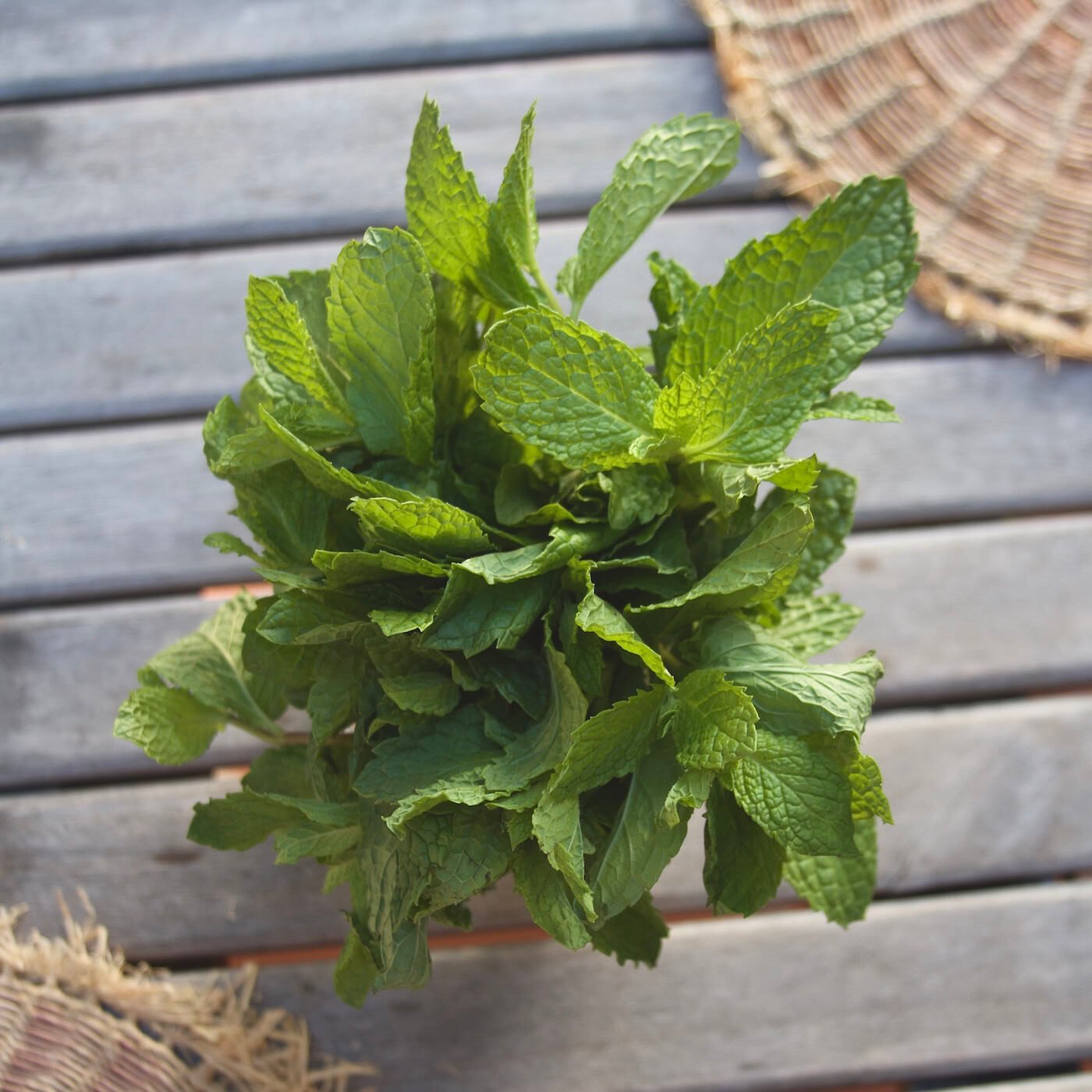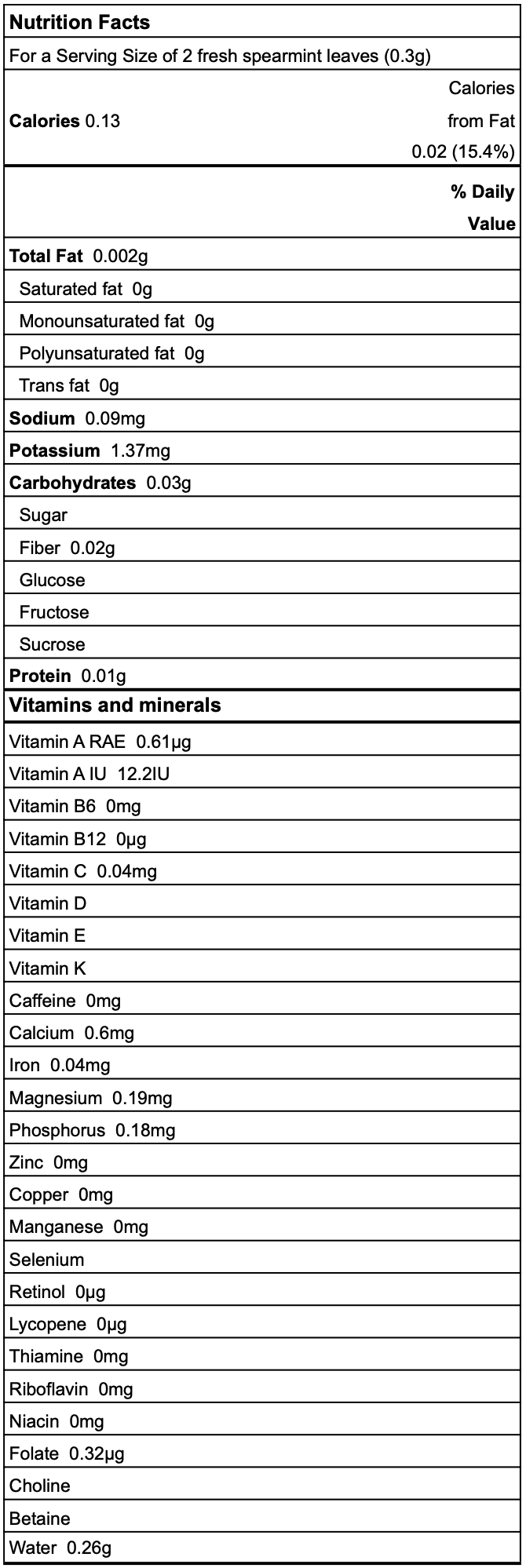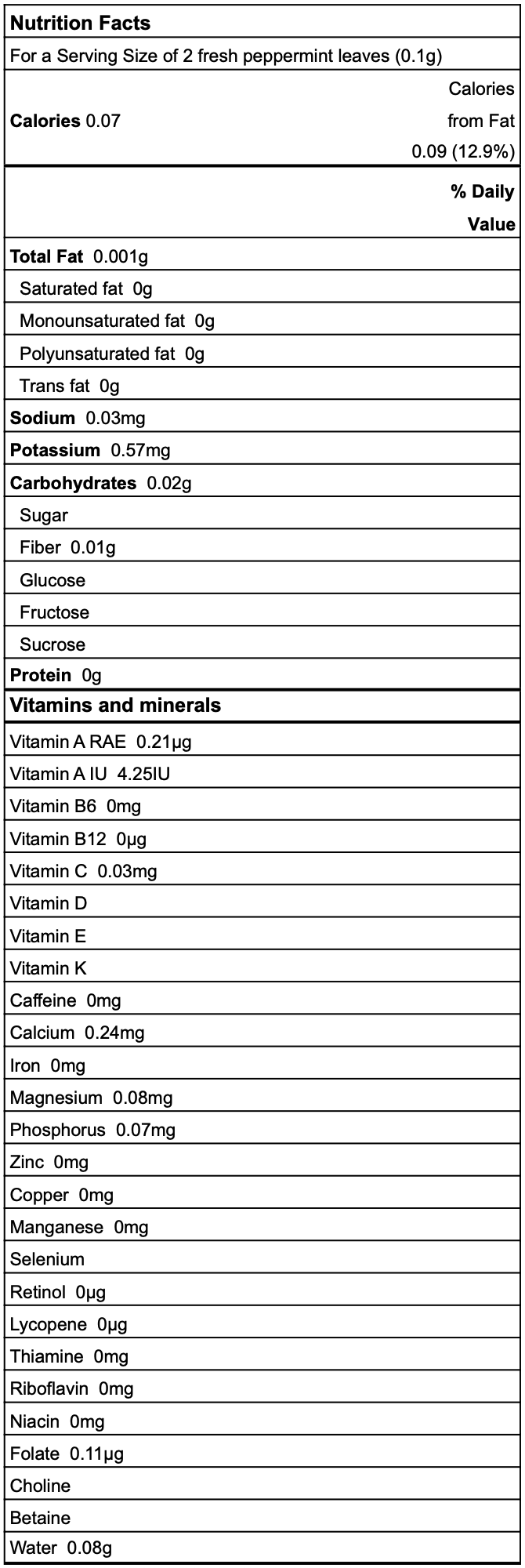Mint
Mint is the herb derived from the leaves of various species in the genus Mentha, part of the mint family. There are over 30 species, but the two most widely used in cooking, each with hundreds of cultivars, are:
Spearmint: Mentha spicata
Peppermint: Mentha × piperita
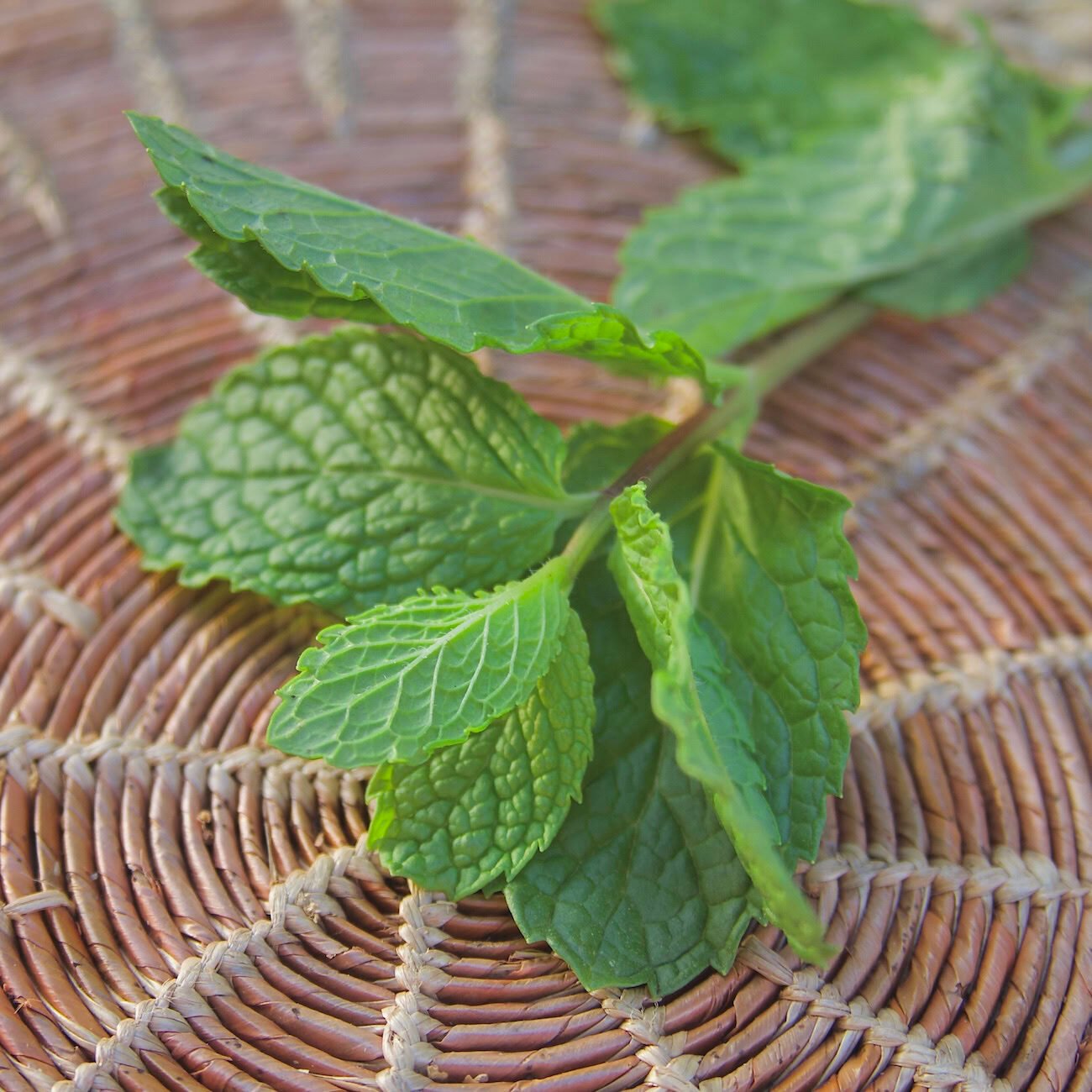
REGION OF ORIGIN
Mint is a diverse genus with a massive native range—Europe, Africa, Asia, Australia, and North America. Pinpointing its origins is challenging due to its extensive hybridization, but most species are from the Mediterranean and Middle East.
PART & COLOR
Mint leaves are oval- or lance-shaped with serrated edges—from fine and rounded to sharp and jagged. They range in color from deep green to purple to various beautifully variegated patterns. They have a smooth or slightly hairy upper surface and a slightly paler, matte underside.
HARVEST
Mint is a hardy perennial that thrives in temperate climates, spreading quickly and generously. You can harvest its fragrant leaves from spring through fall, as long as the plant is actively growing. For peak flavor, pick the leaves just before the plant begins to flower. Frequent harvesting is good for you and the plant. You get a steady supply of fresh mint to cook with while keeping the mint lush and preventing it from becoming woody or overgrown.
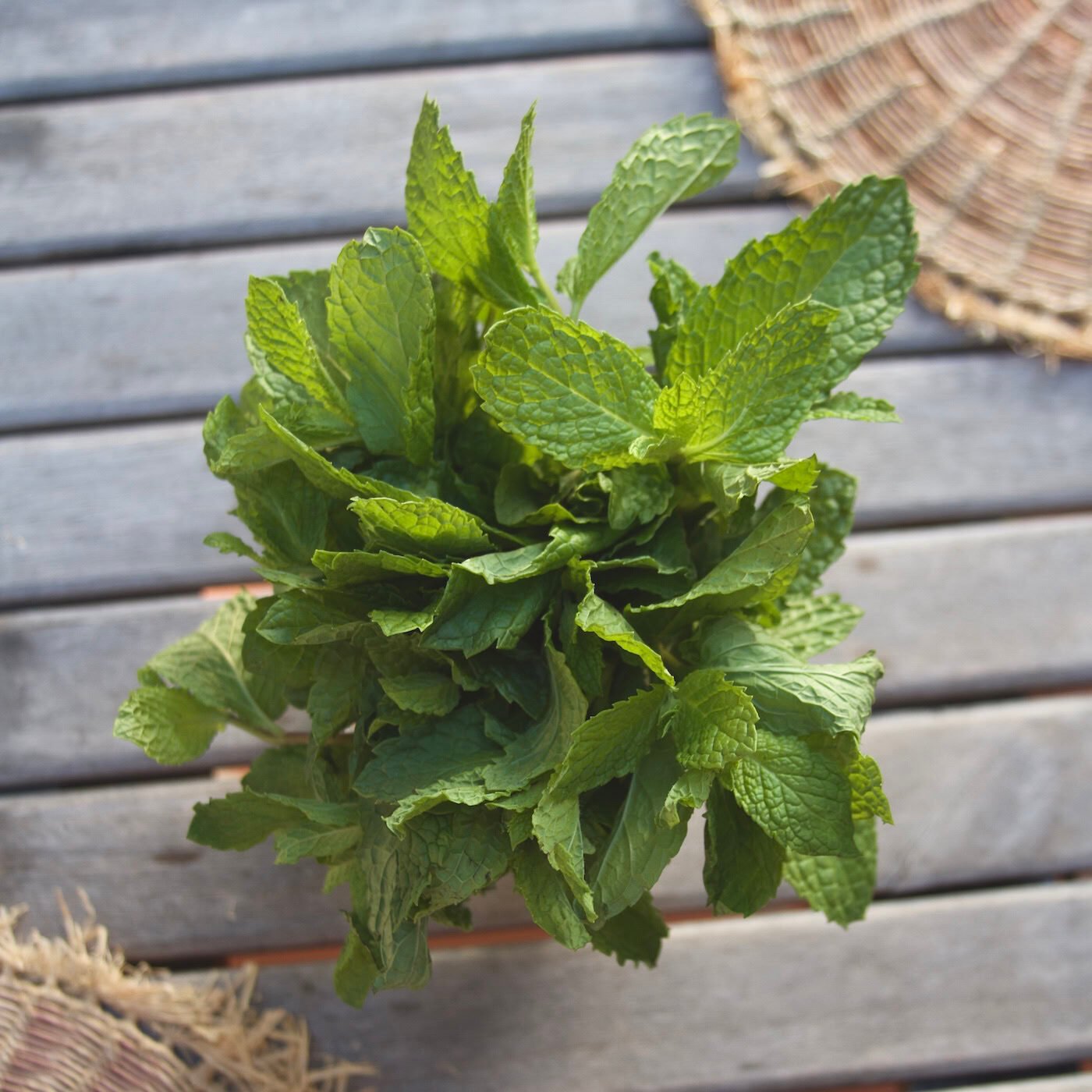
FLAVOR & AROMA PROFILE
The crisp scent of mint is unmistakable. It evokes a sense of cleanliness, probably because we’ve known for millennia about its powerful antibacterial action, even if we didn't understand the science behind it. Its primary note is so iconic that it is used to describe similar notes in other herbs and spices—they have a minty quality. So it sounds ridiculous to say mint smells minty, but that’s really what it is. “Minty” is the effect of its unique chemical composition that provides a cooling sensation with undertones of pepper and sweet eucalyptus.
The flavor of mint on the tongue delivers a cooling and refreshing sensation. The experience starts with a burst of invigorating coolness followed by a lingering sweetness.
Its intensity varies depending on the variety. Spearmint is often mild and sweet, while peppermint has a stronger, sharper aroma and a more intense cooling sensation due to its much higher menthol content (40-60% vs. 0.5%).
CULINARY USES
When you look past its classic role as a garnish, mint has undeniable breadth. There are countless creative ways to use its unique cooling properties. One of the most obvious is to tame the heat of spicy dishes, but it can also cut through the heaviness of fatty foods to make the whole meal feel lighter.
Spearmint in particular is often used in Mediterranean, Middle Eastern and South Asian cuisine. It's a key ingredient in tabbouleh and tzatziki, and mint chutneys and sauces are superb dips for samosas and kebabs. Spearmint jelly pairs beautifully with roast lamb as well, and it's the mint of choice for refreshing drinks like mojitos, mint juleps, lemonades, and iced teas. One of the quickest, simplest ways to enjoy its splendor is as a finishing touch for fruit salads.
The bolder peppermint is mainly used in sweets like chocolatey desserts, candies, and ice cream, especially during the holidays. And its digestive benefits make it the perfect after-dinner mint.
